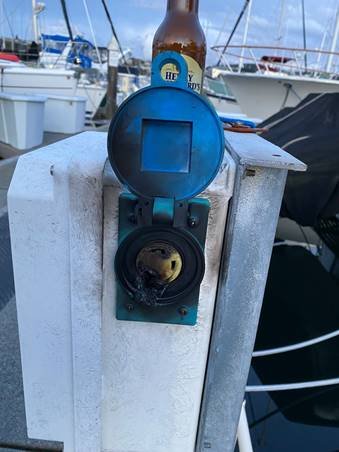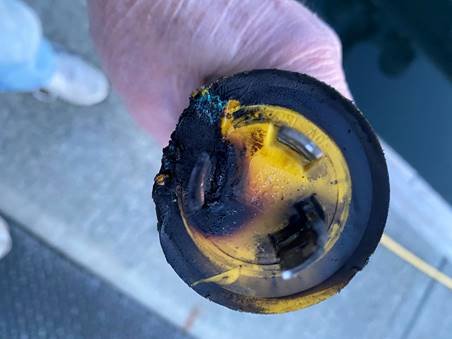First hand experience earlier this year. Our power pedestals do NOT have a locking ring on the pedestal. Very many of us have rigged some type of support and/or shock cord set up. We had some very very strong wind gusts that apparently corrupted the connection at the pedestal. We have a liveaboard neighbor who, along with the dockmaster, stopped the flames and killed the breaker. Amazingly, total damage to the post was only $72 and the repaired post still has no retaining ring threads. (Dock is being upgraded to 50 amp this summer.)
We have never had an issue with the boat side of the cord - we use the retaining ring.
View attachment 102521
View attachment 102523



